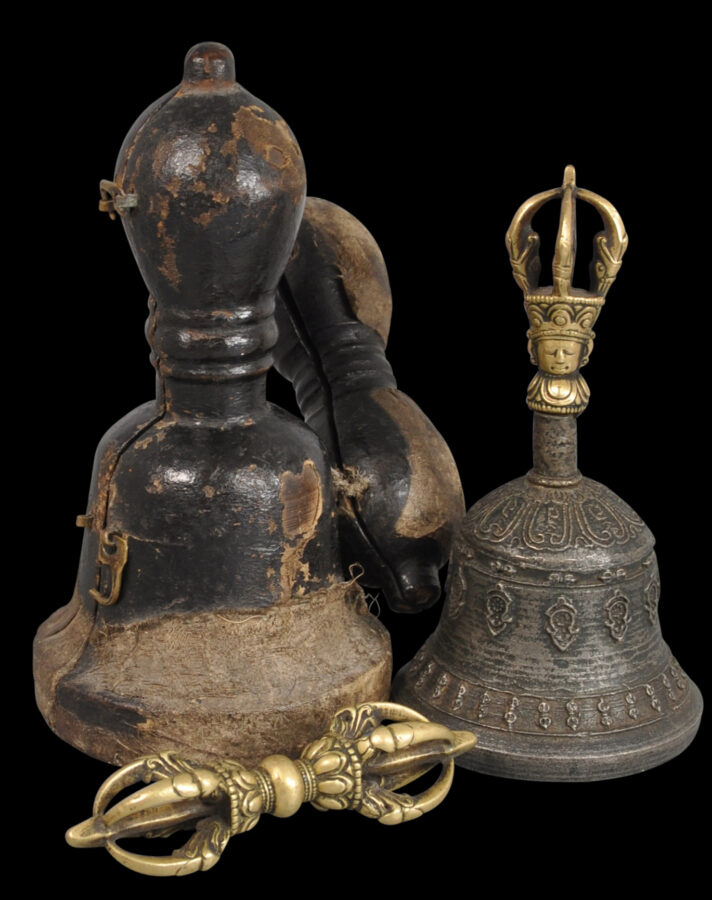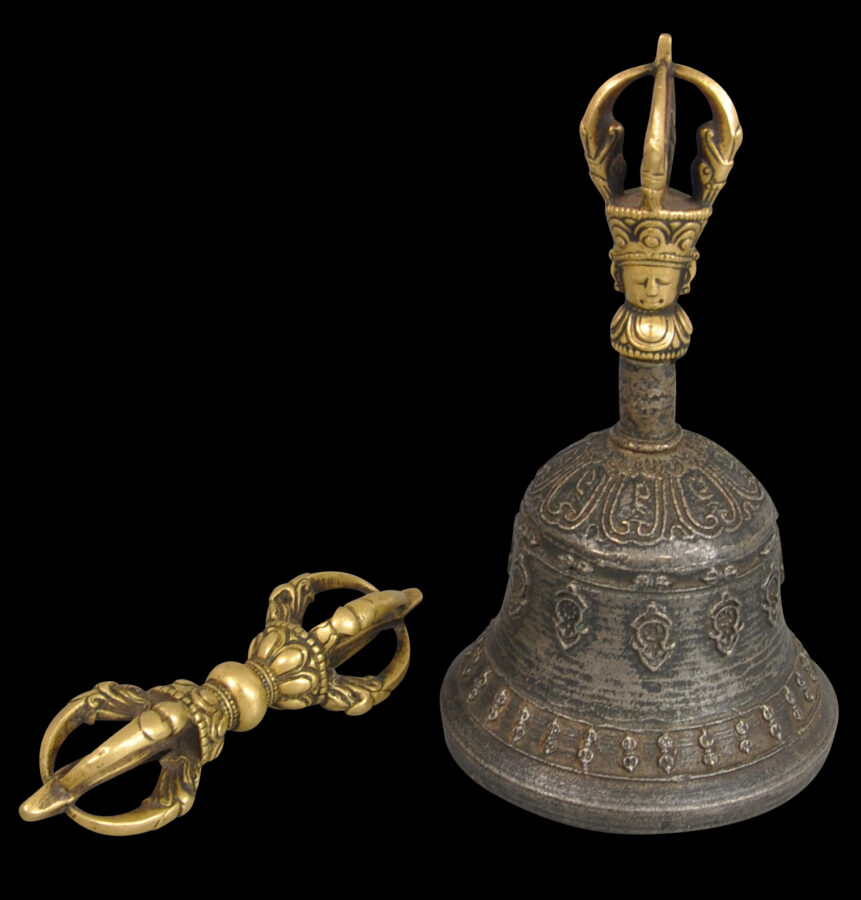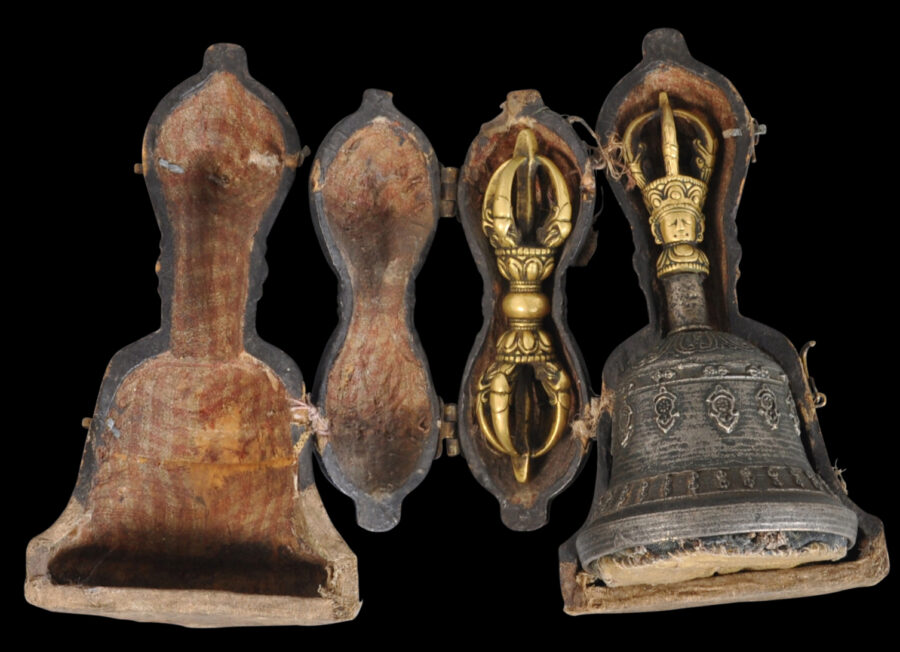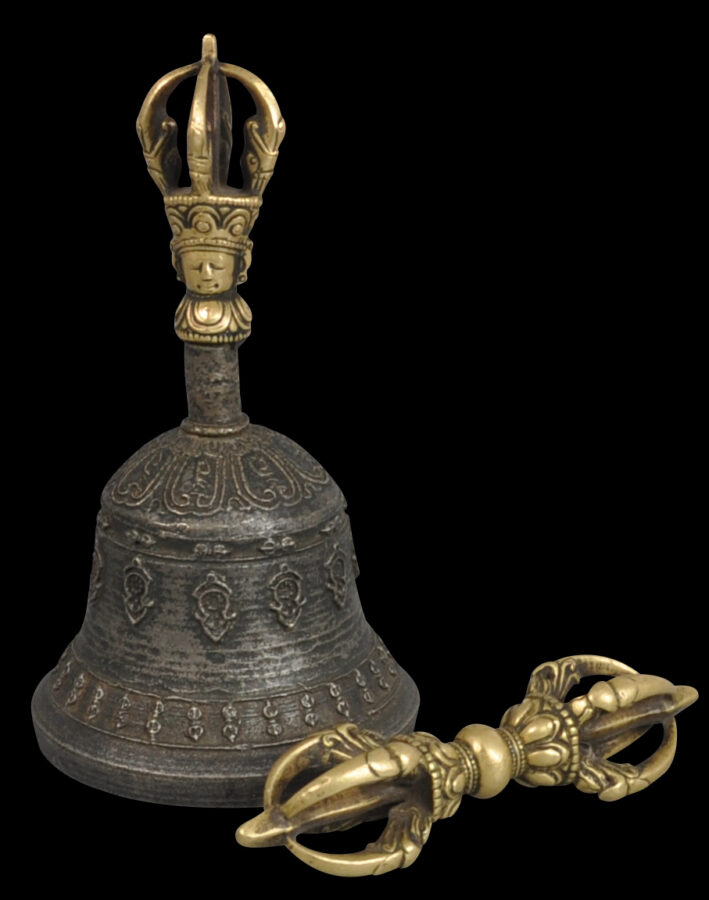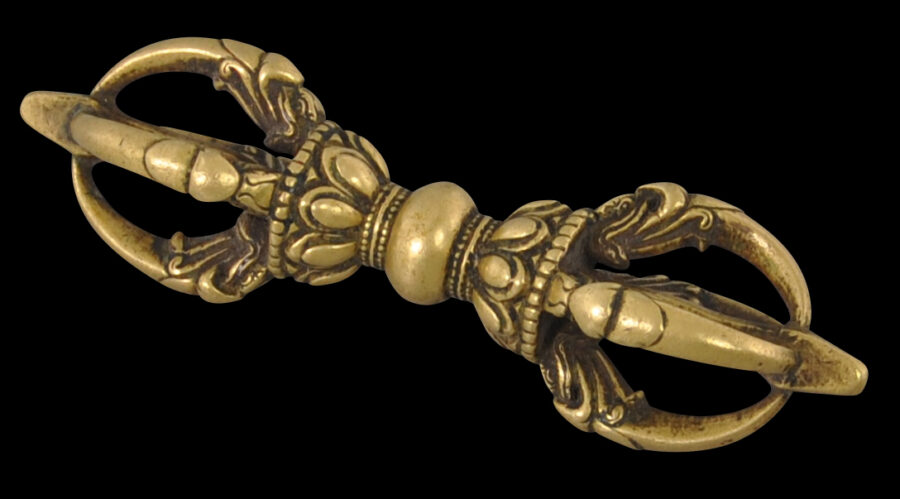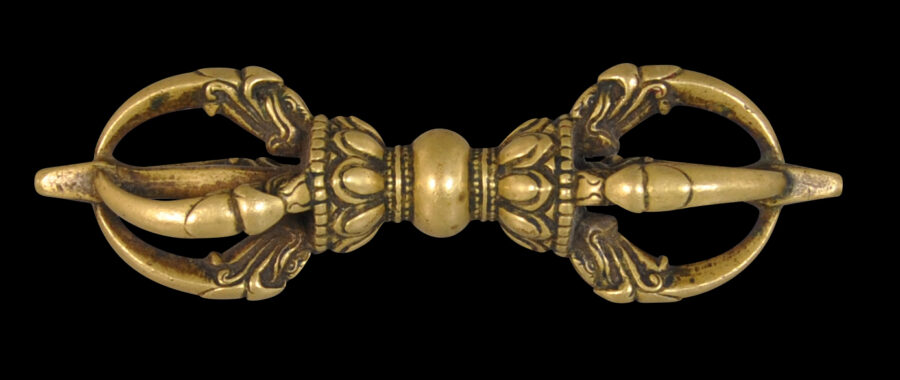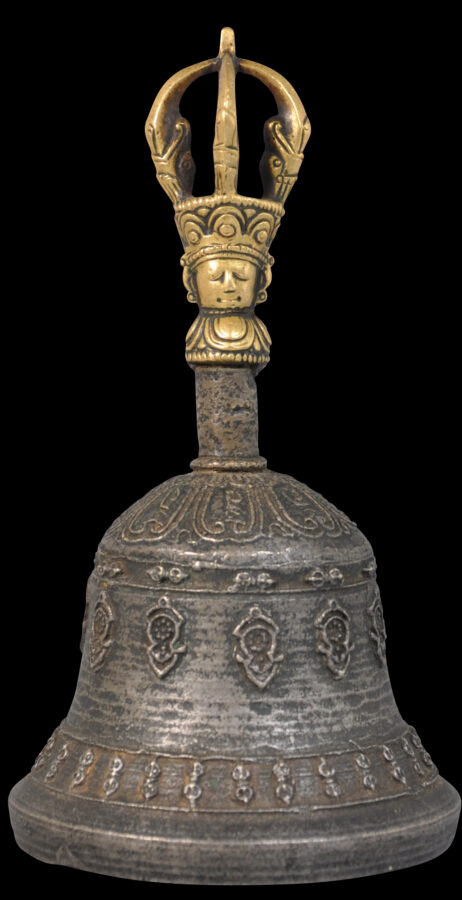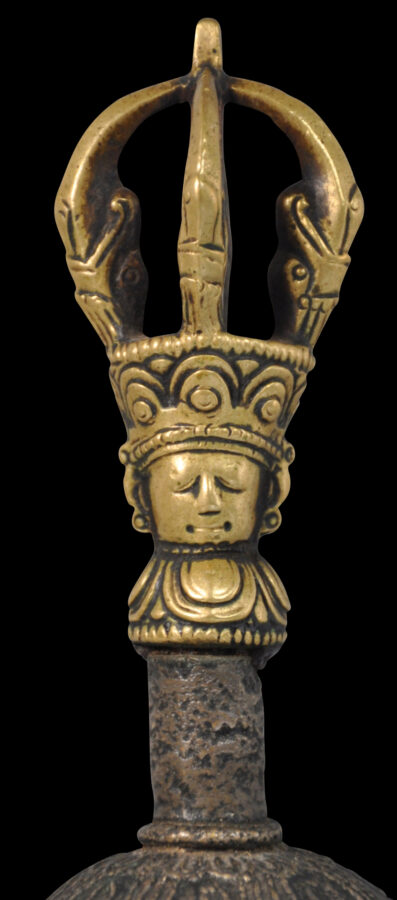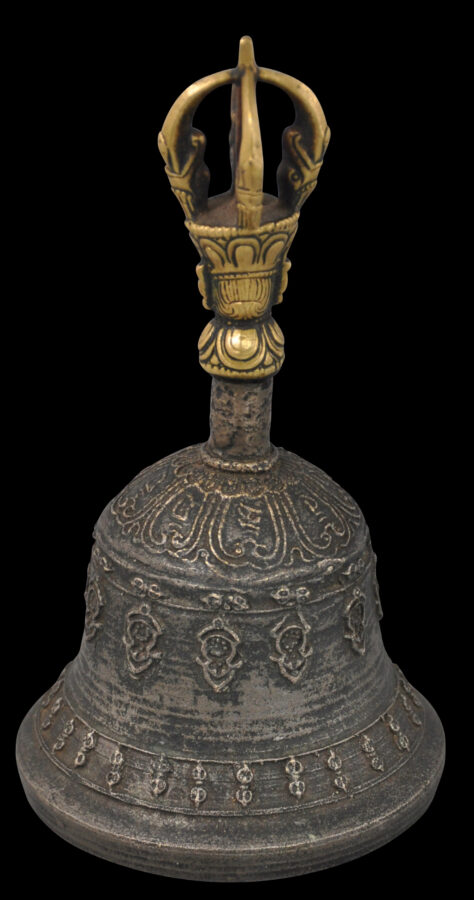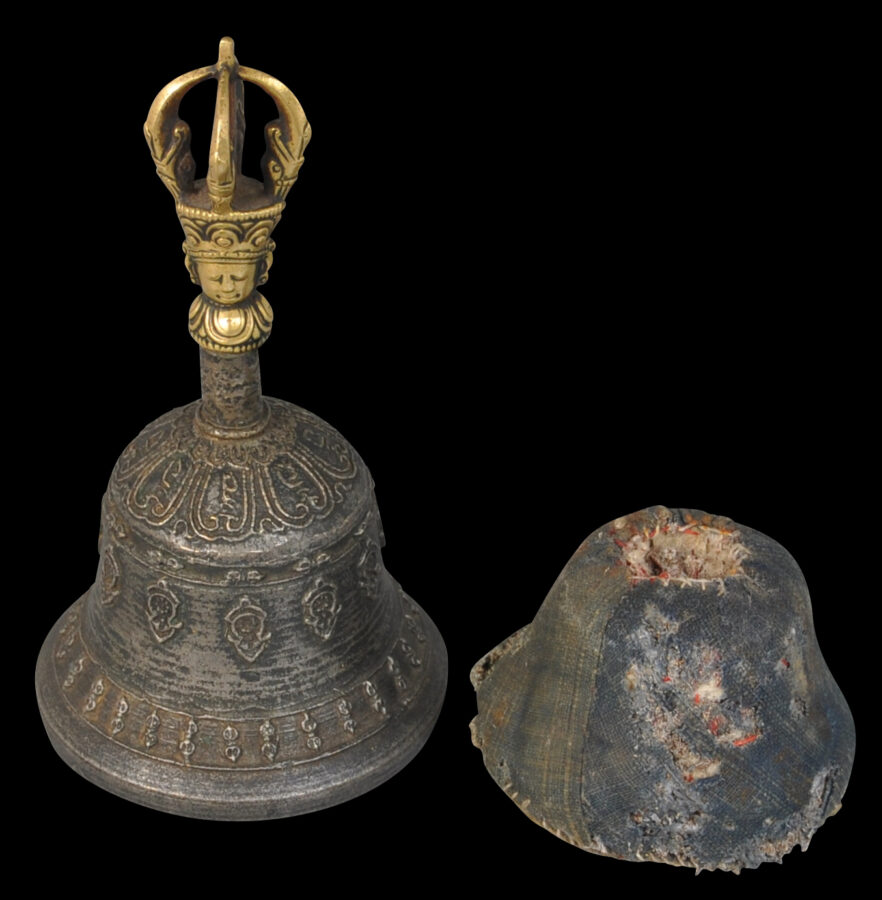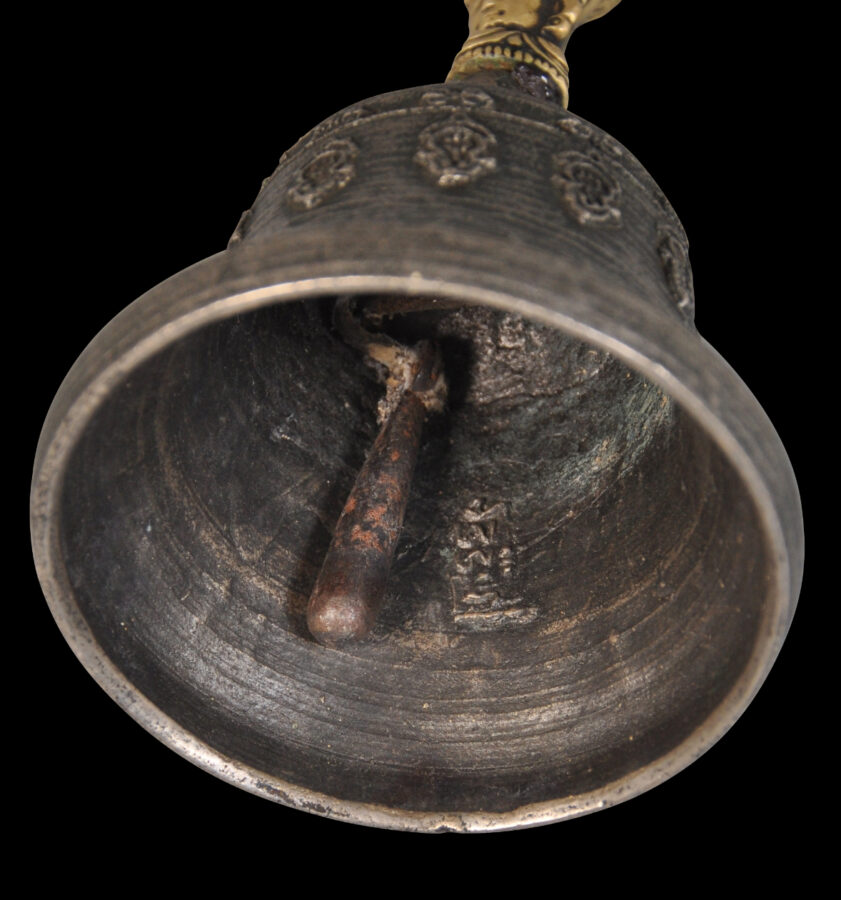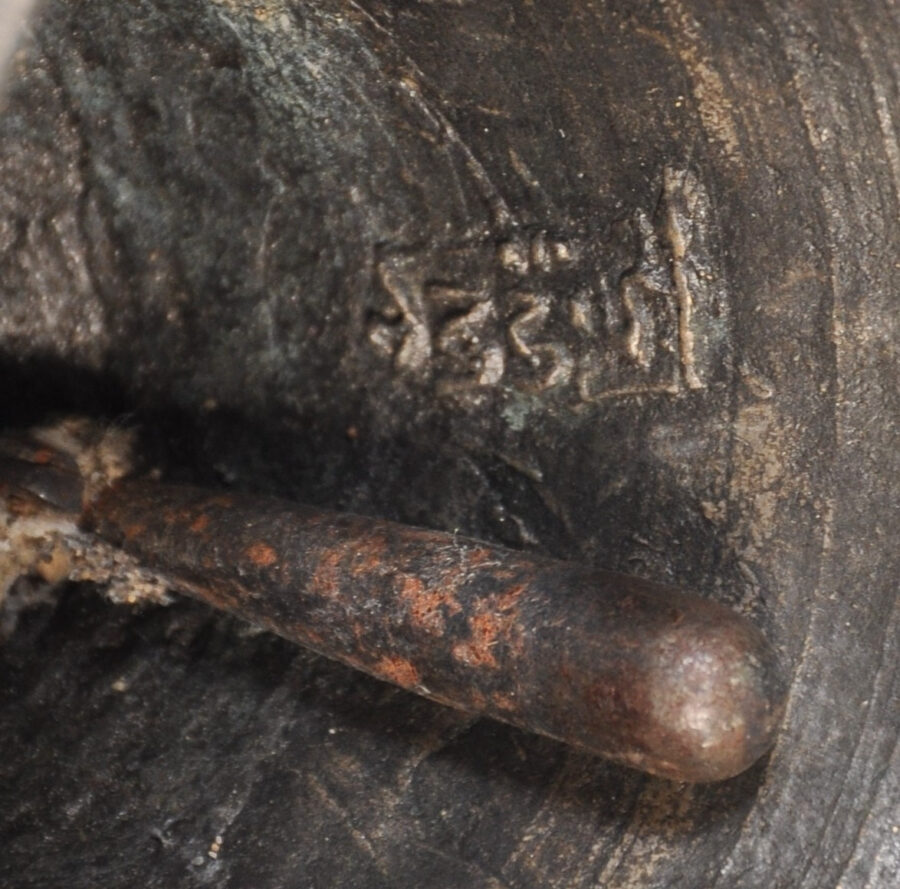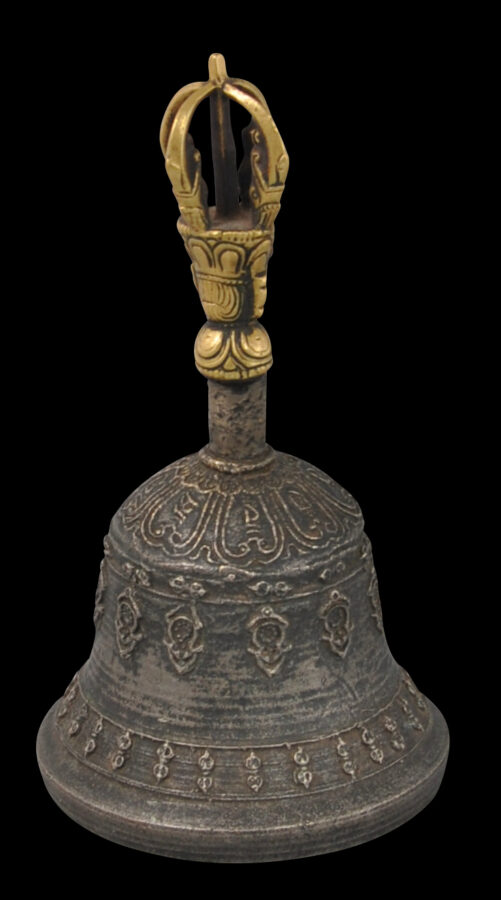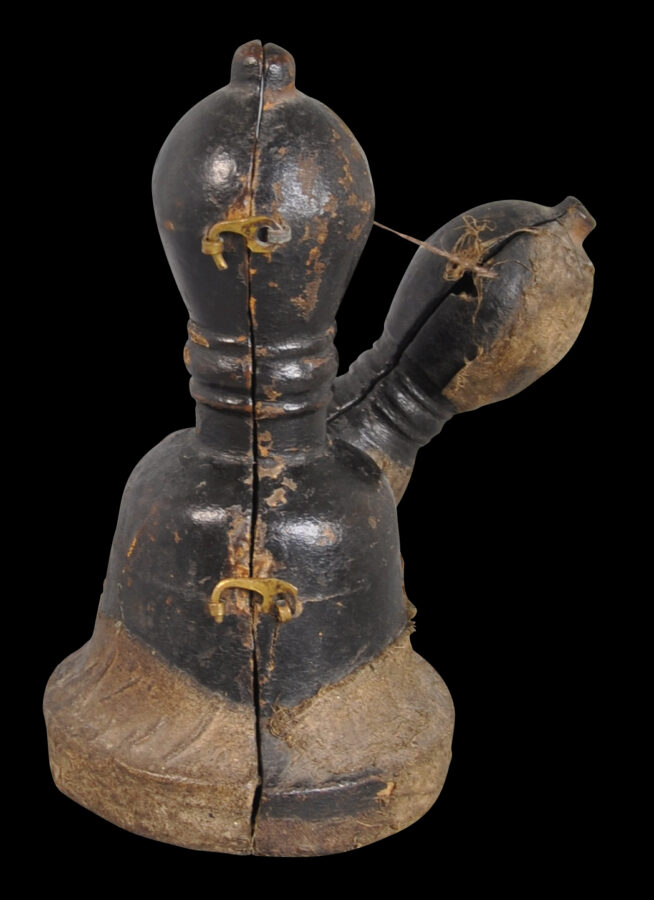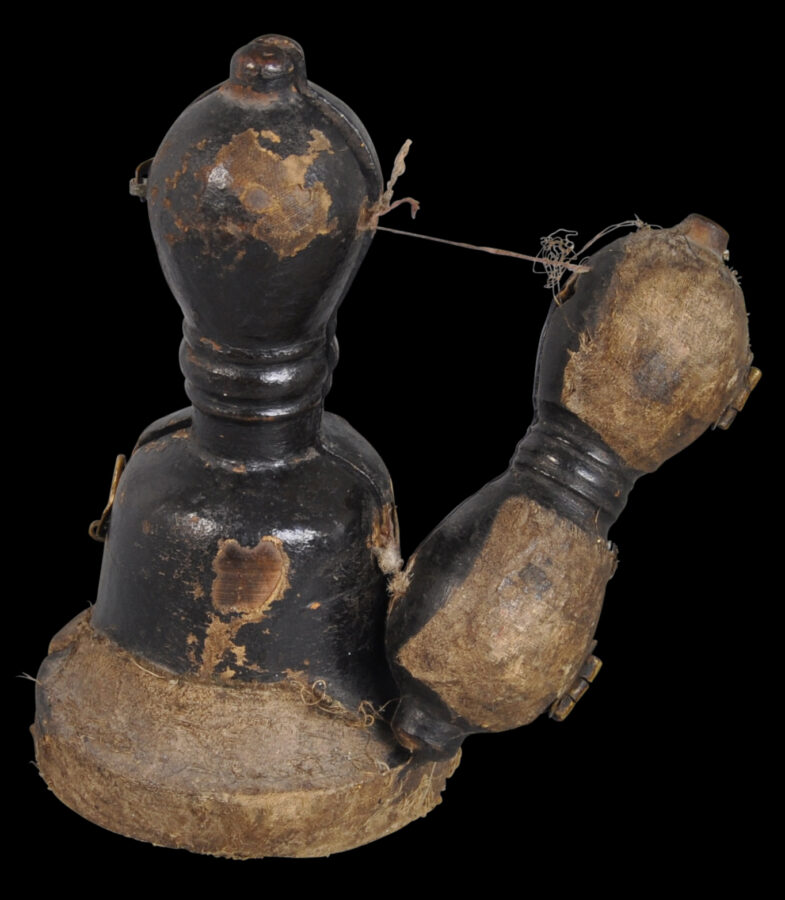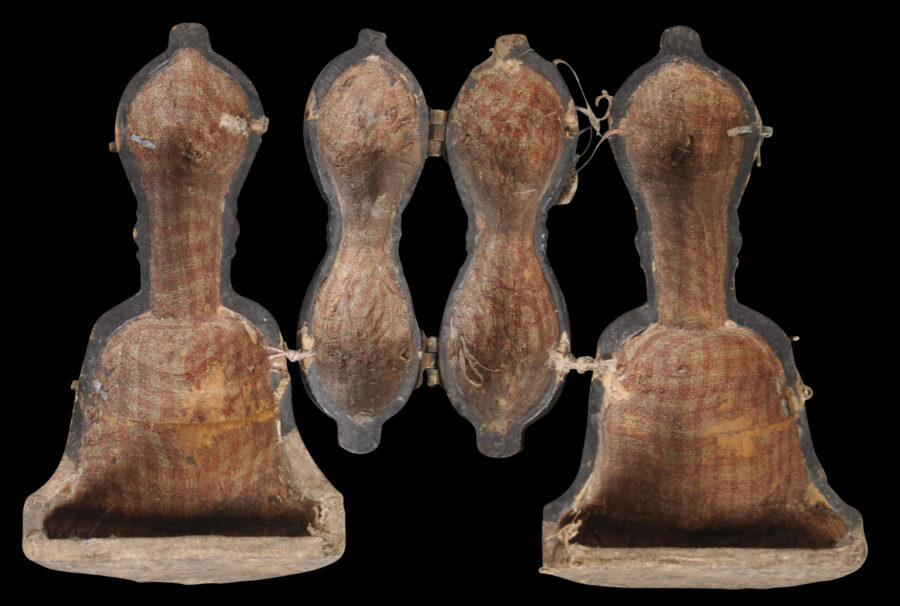The body of the bell (ghanta) is cast with various emblems including lantsa script symbols ensconced in lotus petal frames, and two fine bands of vajras. The grip is cast with a head (the face on one side and the back of the head on the other – this is often thought to be a wisdom deity or yum) atop which there is a crown that is a four-pronged vajra finial with each prong emerging from the mouth of a makara, symbolising that all beings are held by the vajra in the grip of compassion.
The bell retains its original clapper which is attached with an old leather strap.
The paired vajra has a central flattened spherical grip bordered on each side with lotus petal borders, and four prongs that emerge from makara mouths around a central prong.
There is a separate case for the bell and another for the vajra. Both have thin hand-carved wood substrates covered on the outside with black lacquered yak leather over a textile covering. Both have brass latches and brass brass butterfly hinges. The two cases are connected by an old section of twine.
The bell retains its original stuffed textile plug that slides inside the body of the bell, with a hole in which the clapper rests. This stops the bell from ringing when it is encased and being transported. This is a rare, original addition.
Both the grip of the bell and the vajra have wear; their contours have been softened from age and ritual handling. Both cases shows their age but are stable. The bell has a very fine, crisp ring.
A related pair but with only the original case for the bell comprised lot 58 of Bonhams New York ‘Indian, Himalayan & Southeast Asian Art’ sale, March 17, 2014. Another pair without any cases comprised lot 13 of Bonhams ‘Indian, Himalayan & Southeast Asian Art’ sale, September 18, 2013. A set and cases is illustrated in Lipton & Ragnubs (1996, p. 112).
References
Lipton, B., & N.D. Ragnubs, Treasures of Tibetan Art: Collections of the Jacques Marchais Museum of Tibetan Art, Oxford University Press, 1996.


